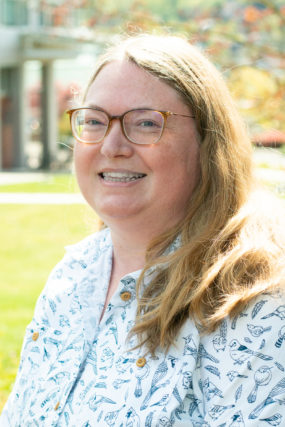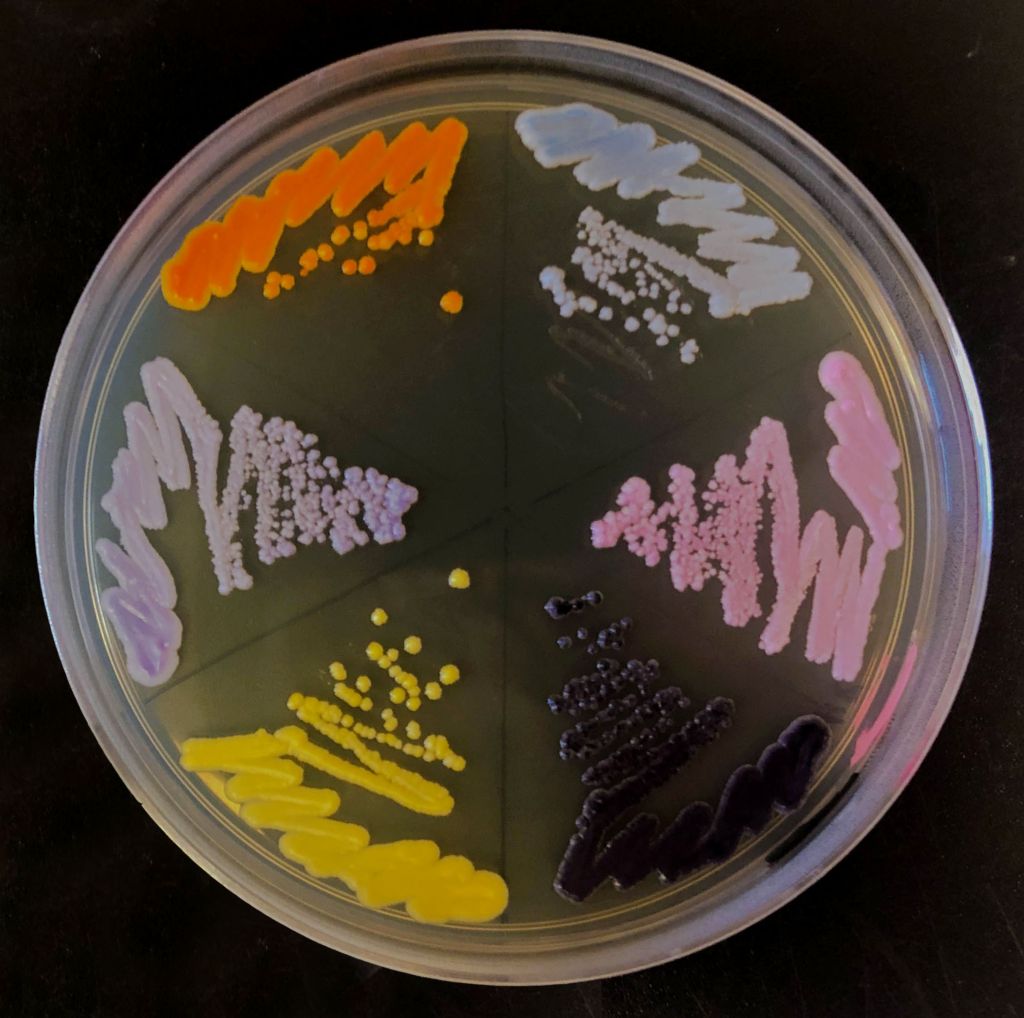
Stories
Maitreya Dunham: Budding Connections Inside and Outside the Lab

Maitreya Dunham gained research experience in many different fields as a student, from genetics to immunology to cancer, but one mighty model organism stuck with her as she set up her own lab to study experimental evolution and genetics: Saccharomyces cerevisiae. “That was one thing about the cancer world that was striking to me—how complicated things were—and there were so many aspects that remained unclear. So, when I learned about yeast, I thought, this is so teensy; six thousand genes, they must know the whole story by now, right? And that was manifestly not true!”
As an undergrad, Dunham attended the Massachusetts Institute of Technology and worked in the lab of Bob Weinberg. She recalled that after reading an article about his research in telomerase, “I thought, wow, that sounds really exciting, and I talked to Weinberg to see if he had any positions open in his lab. I got to join his lab and had just a really great experience there, and also realized just how complicated cancer is.” After graduating from MIT, she went on to receive her doctorate in genetics from Stanford University.
Now, as a professor of Genome Sciences with her own lab at the University of Washington, Dunham has developed a platform for high school students to set up their own yeast evolution experiments, which led to the publication of a paper using student data.
“For the first several experiments we did, we wanted something that would have that connection to everyday life. We used an antifungal so that [students] could observe drug resistance emerging, which is something that most people have some awareness of—like antibiotic resistance. The active ingredient in the antifungal is a very important chemical family, the azoles, which are used for all sorts of antifungal applications. It was so amazing, the mutations that emerged…in addition to a bunch of known targets, they actually discovered a couple of genes that we think are new and that are related to antifungal resistance. It’s been really interesting to see how the students engage with their mutations, with their own strains, and being involved in a research project.”
“We found a brewer that was willing to collect samples for us, and over six months of time, we were able to see mutations arise and take over the culture, or population. It’s been really exciting to take some of the same strategies and analysis methods that we use for laboratory evolution, and now start looking for connections in the real world.”
Dunham enjoys the versatility that working with yeast gives her in connecting her research to broader impacts in society. “There’s really some basic science and fundamental work that can be done using this system. But also, it’s such a big industry organism. Many of the students from my lab go and get jobs at companies that are using yeast as a system to manufacture things,” says Dunham.
In fact, Dunham has ongoing projects working on beer yeast and has learned as much about organismal evolution in industrial environments as brewers have gained in understanding how changes in yeast impact their final product. “One fun project that we’ve started in just the past couple of years is looking at evolution in real time in brewery environments. It turns out that brewers are doing evolution experiments all the time because they are constantly growing yeast. They use it for one batch of beer, and then they take some of that yeast and transfer it to the next fermenter to start the next batch of beer, and then they transfer it again. This is exactly like the experiments we do in lab.”
“We found a brewer that was willing to collect samples for us, and over six months of time, we were able to see mutations arise and take over the culture, or population. It’s been really exciting to take some of the same strategies and analysis methods that we use for laboratory evolution, and now start looking for connections in the real world.”
In addition to understanding the impacts of experimental evolution on manufacturing, Dunham’s work informs a broad range of research topics with clinical applications, from comparative genetics to pharmacogenetics.
“Pharmacogenetics is how genes are involved in drug metabolism, or how your body metabolizes a drug. It’s a case where there is actually clinical use. If you get prescribed a blood thinner, for example, it can have some bad reactions if you take too much or too little. If you have a genotype that has a risk of an adverse reaction, you start off at a more conservative dose and are monitored by a doctor. This kind of precision medicine, personalized medicine, is really effective for where you can’t make those kinds of on-the-fly decisions,” Dunham explains.
Another application that Dunham is excited about is cancer risk. “One example is in mismatch repair genes. If you have an error in DNA replication that causes a mutation, or if you’re zapped by a cosmic ray or something, then these mismatch repair proteins can come in and fix the mutation. But, if you have an inherited mutation in one of those proteins, then you’re at high risk for developing cancer.”
“So now, what if there’s a variant in this person’s gene. Does it matter? Should they start to get tested for polyps in their colon in their 20s, or are they okay and don’t need to do more aggressive testing? We were able to use the yeast version of the gene and develop an assay, a platform to test hundreds of those mutations simultaneously, which has actually been really hard to do using other technologies.”
Here, Dunham discusses why her research is important, what challenges she has faced in her career, and what she enjoys doing outside of lab.
Can you describe your research in more general terms and explain how your discoveries have an impact on larger society?
Evolution underlies so many modern public health problems: antibiotic resistance, cancer development, and COVID-19. So my research asks, how can we predict evolution? How can we stop evolution? How can we direct evolution in different directions away from the outcomes that we don’t want? Those are all really practical aspects of evolution, but we don’t understand it because some of the fundamentals of how genomes evolve have not been explored thoroughly. And so, one thing that my work seeks to do is to use experimental evolution to do more controlled experiments, where we can watch evolution as it happens and then design new experiments to ask, can we now change the course of evolution?
What have been some of the biggest challenges that you’ve faced, and how have you addressed these hurdles?
There are experiments I did in graduate school that I still don’t completely understand; they’re still in my freezer, and every time we get a new technology or a new way of looking at things, we’ve revisited these experiments. My new graduate students are always a little bemused when I say, oh, yeah, go find these tubes from 20 years ago. We just published a paper of an experiment that a rotation student did in 2014 that, at the time, was an interesting result, but we didn’t know quite what to do with it. However, my collaborator, Bonny Brewer, met another scientist at a conference and they started talking about this interesting result. That conversation ended up turning into a fantastic collaboration and a great publication to understand a previously unknown mechanism.
What are passions or interests that you have outside of the lab?
I like hiking and camping a lot. I do a lot of crafting—crochet and painting and making stuff. I also look forward to spending time with my little niece and nephew who live all the way across the country. And I like to read science fiction books. Right now I’m reading my way through the 21st Century Science Fiction Book Club selections from a local Seattle bookstore, Ada’s Technical Books.

The yeast strains were developed by Jef Boeke, New York University, Langone Health.